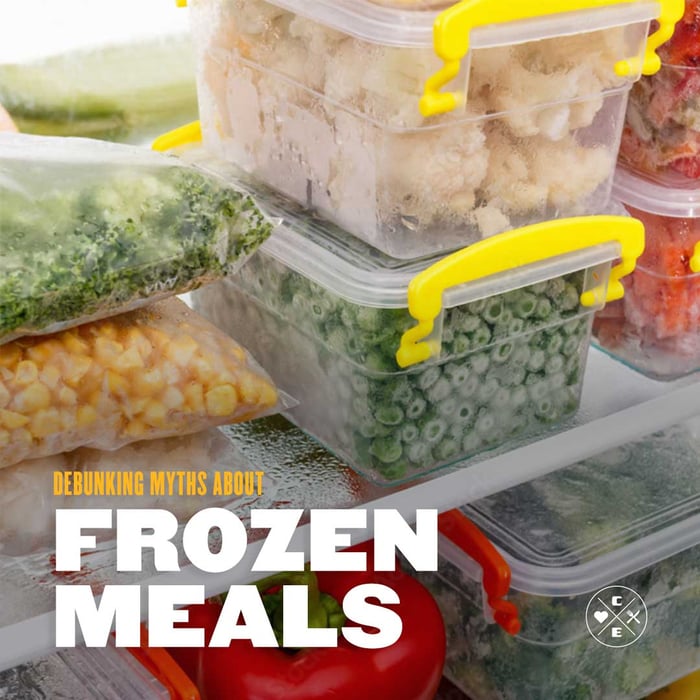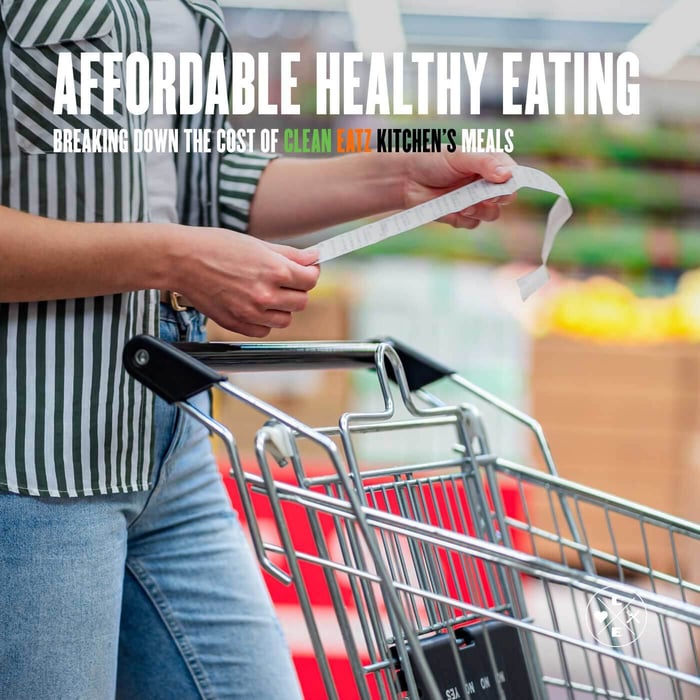Debunking Myths About Frozen Prepared Meals (2026)

Dorothy M. Shirnyl, RND
Nutrition
|
Healthy Recipes
|
Healthy Lifestyle
09/29/2025 2:06pm
5 minute read
Top myths (and the facts)
Myth #1: “Frozen meals are less nutritious than fresh.”
Fact: Research comparing fresh vs. frozen produce finds comparable vitamin levels (sometimes higher in frozen after typical home storage of “fresh”).1, 2, 3 Quality varies by recipe—so pick meals built around veggies, whole grains, and lean proteins.
Myth #2: “Microwaving destroys nutrients.”
Fact: Nutrient retention is mostly about time + temperature, not the appliance. Because the microwave is fast and uses little water, it often preserves heat-sensitive vitamins better than longer cooking methods.4, 5 Use microwave-safe containers and follow package directions.6
Myth #3: “Frozen meals need lots of preservatives.”
Fact: Freezing itself prevents microbial growth; food held at 0°F / −18°C is safe indefinitely (quality slowly declines). Preservatives aren’t required for safety, though some recipes use stabilizers for texture or flavor.7, 8
Myth #4: “Freezer burn means the food is unsafe.”
Fact: Freezer burn is a quality issue (dry spots), not a safety problem. Trim if needed and enjoy.9
Myth #5: “All frozen meals are salt bombs.”
Fact: Some are high, but many 2025 options are moderate. Aim for ~≤600–700 mg sodium per tray and balance the rest of your day toward the AHA’s ≤2,300 mg/day (ideal ~1,500 mg for most adults).10 Check the Added Sugars line, too—now required on labels.11
Myth #6: “Net carbs” on the front tells you everything.
Fact: “Net carbs” isn’t a legally defined FDA term. Prioritize the Nutrition Facts panel: total carbs, fiber, protein—and how the meal fits your goals.12
Myth #7: “All frozen meals are ultra-processed and unhealthy.”
Fact: “Processed” spans a spectrum. You can choose frozen meals with whole-food ingredients, veggies, legumes, whole grains, and unsaturated oils—and limit those high in refined starches/sugars or processed meats.13, 14
Myth #8: “Frozen meals cause weight gain.”
Fact: Weight change depends on overall calories and consistency. Preportioned frozen meals can help many people stick to calorie and protein targets. See our calorie-goal guide and portion vs. calorie counting.
How to shop smart (2025)
- Protein: Target 25–40 g per meal (chicken, turkey, fish, tofu/tempeh, legumes). See our high-protein guide.
- Fiber & veggies: Look for ≥5 g fiber; add a side of frozen veggies or salad if the tray is light.
- Carbs that fit: Prefer whole grains/beans over refined starch. Ignore front-of-pack “net carb” hype; use the Nutrition Facts.12
- Fats: Favor meals made with olive/avocado/canola oils over heavy cream/butter for heart health.why?
- Sodium & added sugar: Check both lines; keep day’s totals inside your goals.10, 11
Safe storage, thawing & reheating
- Store at 0°F (−18°C) for best quality; colder is better.7
- Defrost safely: In the fridge, in the microwave (then cook immediately), or cold water—never on the counter.7
- Microwave wisely: Use microwave-safe containers, cover/vent, stir or rotate, check temperature, and respect standing times to avoid “cold spots.”6, 15
- Listeria note: Ready-to-eat refrigerated foods can allow Listeria growth over time; frozen meals kept frozen and heated per directions lower risk. Those at higher risk should follow CDC guidance.16
How Clean Eatz Kitchen fits in
Use CEK meals to anchor protein and calories, then round out the plate with produce or a whole-grain side. Explore calorie-controlled meal plans and check Nutrition Info for macros. For broader strategy, see the best weight-loss program.
FAQs
Are frozen vegetables as healthy as fresh?
Often yes. Studies show comparable micronutrients; “fresh” can lose vitamins during home storage.1, 3
Can I microwave in the package tray?
Yes—if the tray is labeled microwave-safe and the package says to do so. Always follow the printed directions and heat thoroughly.6, 15
What’s a good sodium target for a frozen entrée?
As a rule of thumb, aim for ~≤600–700 mg per tray and balance the rest of the day toward the AHA’s daily limit.10
References
- Bouzari A, et al. Vitamin retention in eight fruits & vegetables. 2015. PubMed.
- Rickman JC, et al. Nutritional comparison of fresh, frozen & canned fruits/vegetables (Part II). 2007. JSFA.
- Li L, et al. Selected nutrient analyses of fresh, fresh-stored & frozen produce. 2017. Food Chem.
- Harvard Health — Microwave cooking & nutrition (shorter time often means better vitamin retention). health.harvard.edu.
- Cross GA. Effect of microwaves on nutrient value. 1982 review (minimal differences vs. conventional cooking). PubMed.
- FDA — Microwave ovens: safety & use of microwave-safe containers. fda.gov.
- USDA FSIS — Freezing & food safety (0°F storage; safe defrosting). fsis.usda.gov.
- FDA — Are you storing food safely? Freezing stops growth; quality changes over time. fda.gov.
- USDA — What is freezer burn? Safe but affects quality. ask.usda.gov.
- AHA — Daily sodium: ≤2,300 mg; ideal ~1,500 mg for most adults. heart.org.
- FDA — Changes to the Nutrition Facts label (Added Sugars now required). fda.gov.
- American Diabetes Association — “Net carbs” isn’t standardized; use total carbs on the label. diabetes.org.
- Harvard T.H. Chan — Processed foods & health: using frozen/canned wisely. HSPS Nutrition Source.
- Harvard Heart Letter (2024) — Processed foods can fit; choose wisely. health.harvard.edu.
- USDA FSIS — Cooking with microwave ovens (avoid cold spots; use a thermometer; follow directions). fsis.usda.gov.
- FDA — Preventing Listeria infections (refrigeration time matters for RTE foods). fda.gov.
Links verified September 2025. Educational content only; not medical advice.



